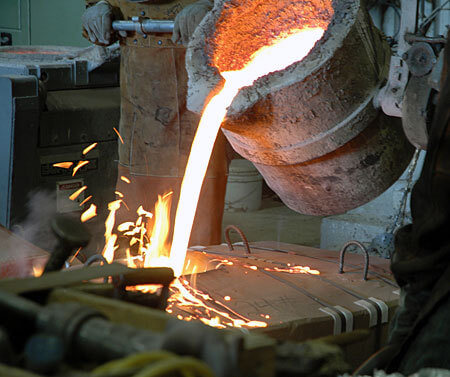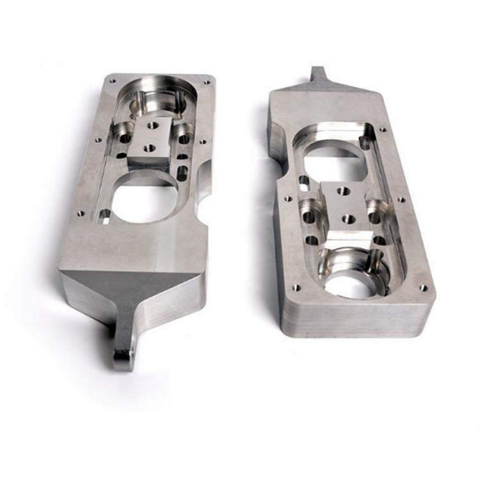Proven Methods to Reduce Defects in Precision aluminum casting
Aluminum Casting Techniques: a Deep Dive Into Materials and Techniques for Success
Aluminum casting methods play a vital duty in production. Different methods exist, each fit to different applications and requirements. Sand casting is favored for bigger elements, while die casting is known for its precision in high-volume manufacturing. Investment casting offers comprehensive styles with superior finishes. Understanding these differences can substantially impact project outcomes. Precision aluminum casting. However, picking the ideal approach is not always straightforward, bring about essential considerations that should be checked out additionally
Recognizing Aluminum Casting: A Review
Aluminum casting is a crucial manufacturing process utilized throughout various markets to produce elaborate parts with high precision. This technique involves putting liquified aluminum into a mold, permitting it to solidify and take the shape of the wanted component. The convenience of aluminum, integrated with its lightweight and corrosion-resistant residential or commercial properties, makes it an ideal selection for applications in auto, aerospace, and customer products.
Various casting methods exist, each matched to particular requirements and project ranges. Variables such as mold products, cooling down prices, and the intricacy of the design play a substantial role in determining the most reliable approach. In addition, the buildings of the aluminum alloy used can impact the last item's surface area, stamina, and durability coating.
Understanding the fundamentals of aluminum casting enables producers to optimize manufacturing procedures, minimize waste, and assurance top quality output, which is important in today's open market.
Sand Casting: Applications and methods
Among the numerous techniques made use of in aluminum casting, sand casting stands apart because of its adaptability and cost-effectiveness. This method entails creating a mold and mildew from a mixture of sand and binder, which can be shaped to suit complex styles. When the mold is ready, molten aluminum is put right into it, enabling intricate features and details to be recorded.
Sand casting is specifically beneficial for creating huge parts and low-volume manufacturing runs, making it excellent for automobile elements, equipment components, and creative sculptures. The technique also accommodates a variety of aluminum alloys, improving its flexibility in different applications. Additionally, the usage of sand as a mold and mildew product permits simple reclamation and reuse, adding to ecologically lasting methods. Attaining high dimensional precision can offer difficulties, necessitating competent craftsmanship and mindful control of the casting procedure. Generally, sand casting remains a basic approach in aluminum foundries worldwide.
Die Casting: Precision and Effectiveness
Die casting is a highly efficient technique of producing aluminum components with extraordinary dimensional accuracy and surface coating. This process includes requiring molten aluminum into a precisely machined mold and mildew under high pressure, which permits intricate styles and minimal product waste. The fast air conditioning of the alloy within the mold and mildew leads to a strengthened component that frequently needs little to no added machining.
Die casting is especially advantageous for high-volume production runs, where consistency and speed are critical. It sustains the production of intricate geometries, making it ideal for various applications, consisting of vehicle, aerospace, and customer goods.
The procedure can suit different aluminum alloys, improving the mechanical buildings of the completed products. With its capability to create lightweight yet sturdy components, die casting stands apart as a preferred strategy in modern manufacturing, delivering both precision and efficiency in aluminum casting.
Financial Investment Casting: Information and Complexity
Investment casting, likewise called lost-wax casting, is a precise and versatile method for creating complex aluminum parts. This method is particularly valued for its capacity to develop detailed geometries and fine details that are often unattainable with various other casting techniques. The procedure starts with a wax pattern, which is covered in a ceramic shell. As soon as the shell sets, the wax is melted away, leaving a thorough mold and mildew for aluminum pouring.
The benefits of financial investment casting consist of exceptional surface area coating and dimensional precision, see this site lessening the need for comprehensive machining later. It is particularly valuable for tiny to tool manufacturing runs where precision is critical. This approach accommodates numerous aluminum alloys, improving its applicability across sectors. Aluminum Casting Company. Ultimately, investment casting sticks out for its ability to deliver both visual appeal and practical performance in aluminum components, making it a recommended selection for designers and designers seeking complicated solutions

Choosing the Right Technique for Your Job
Exactly how can one determine one of the most appropriate aluminum casting approach for a particular task? The selection process depends upon numerous important factors, consisting of the intricacy of the style, the wanted surface area finish, and production quantity demands. For elaborate styles, financial investment casting frequently confirms advantageous as a result of its ability to record fine details. Alternatively, sand casting may be favored for larger, much less complex components, offering cost-efficiency and versatility in manufacturing.
Considerations regarding resistances and mechanical homes of the final item are important. For high-performance parts, die casting might be the most effective selection, as it gives premium dimensional precision and surface area high quality. On top of that, comprehending the material homes and compatibility with the selected method is necessary for ensuring the success of the task. Inevitably, an extensive examination of these aspects will certainly lead the decision-making process, causing the most efficient aluminum casting technique for the particular task handy.
Frequently Asked Inquiries
What Is the Environmental Impact of Aluminum Casting Methods?

How Can I Improve the Surface End Up of Cast Aluminum?
To enhance the surface coating of cast aluminum, one can use methods such as sandblasting, brightening, and using finishes. Appropriate mold and mildew design and temperature level control likewise substantially enhance the last surface top quality of the actors product.
What Security Preventative Measures Should Be Taken Throughout Aluminum Casting?
During aluminum casting, essential security preventative measures Your Domain Name consist of using protective gear, ensuring appropriate ventilation, utilizing fire-resistant products, keeping a secure distance from molten steel, and adhering to tools safety and security procedures to prevent injuries and crashes.
Exactly how Do I Troubleshoot Common Casting Flaws?
To troubleshoot typical casting defects, one need to evaluate the mold for damages, evaluate find here the alloy structure, check pouring temperature level, adjust cooling rates, and guarantee proper venting to decrease air entrapment and enhance casting top quality.
What Are the Costs Related To Various Aluminum Casting Techniques?
The prices connected with numerous aluminum casting strategies differ significantly, influenced by variables such as material costs, equipment, labor, and manufacturing range. Budget plan factors to consider are essential for choosing one of the most suitable casting technique for particular projects.
Sand casting is preferred for bigger components, while die casting is recognized for its precision in high-volume production. Among the different strategies made use of in aluminum casting, sand casting stands out due to its flexibility and cost-effectiveness. Die casting is a very efficient technique of generating aluminum parts with remarkable dimensional accuracy and surface coating. Financial investment casting, additionally understood as lost-wax casting, is a functional and specific method for generating intricate aluminum elements. How can one identify the most ideal aluminum casting method for a specific project?